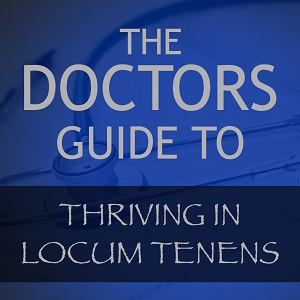It’s hard to believe how many people still question whether the 4% rule will work for their retirement, as if they or anyone else can predict the future. There is very good retrospective data that shows how this rule has done over time as the market and interest rates changed over the last century and will continue to vary in the future.
The validity of the 4% rule is very much like asking if it is safe to drive your car to work today. Of course it is safe. There are decades of data showing the safety of driving your car to work. But your safety is not guaranteed.
A few years ago, bigthink.com published an article titled Infographic: How dangerous is your daily commute? This article states that in 2016 there were nearly 40,000 fatal deaths in the United States from car crashes. Twenty four percent, or nearly 9,600, of them happened during the morning or evening drive times. With 163,600,000 working adults that year, the risk of dying during the commuting hours was 0.006%.
You can see that the likelihood of dying during your commute to work is very low. Yet you do not know if you will be one of the fatal car crashes on the way to work on any given day. But you do know it is very likely you will safely arrive at work today in your car, if you don’t do something stupid on the way. The retrospective death rate from driving to work puts your mind at ease. So, you get in the car and drive to work without worrying you won’t arrive safely.
Since you can drive your car to work even with the remote chance of dying in the process based on the retrospective data, there is no reason to worry about your money not lasting if you follow the 4% rule. Just don’t do anything stupid like “investing” all your money in crypto currency.
A brief simplified description of the 4% rule is you can withdraw 4% of your retirement funds, indexed each year for inflation, and the money will last the rest of your life. Technically the study proposed by William P. Bengen in 1994, and later confirmed by Trinity University in 1998, stated your money will last 30 years, and for most of us retirees, that is the rest of our lives. If you can live on 4% of the money in your retirement accounts, you are almost assured your money will last the rest of your life and you likely will have lots of money left over for your heirs.
To ease your mind a bit, following are the results on my portfolio for the first few years since I quit practicing medicine and started using the 4% rule.
I retired from my full-time job as a partner in a single specialty general surgery practice in 2013. I spent the next three years working half-time as a locums general surgeon at small critical access hospitals relieving lone surgeons. I enjoyed my locums work and the slower pace let me ease into retirement gently. In February of 2017, I saw my last patient and turned in my pager at age 54.
I did not take any money out of my retirement plans in 2017 and experienced a beautiful thing as I had a tax bill of zero that year. If I had known ahead of time that I would be paying no taxes, I would have done some Roth conversions, but this zero tax moment caught me by surprise.
In 2018, I rolled my 401(k) money from my office into a rollover traditional IRA and began taking distributions. I had to follow a set government plan since I was under 59 ½ years old. I made the calculations for a Substantially Equal Periodic Payment (SEPP) schedule (IRS rule 72(t)) to distribute the money without paying any penalty. I wrote a guide to help you do this.
The calculation worked out such that my first payment equaled 4.18% of my retirement funds. I was required to take that same dollar amount (not percentage amount) every year until I turned 60, but it had to be for at least five years.
So, in the summer of 2018, I took my first distribution. My retirement portfolios are invested 100% in stock mutual funds. Since I did not want to worry about needing to take the required distribution in a down market, and having the agonizing choice of which down stock mutual funds to sell, when the cash was transferred to my new rollover IRA, I held back enough cash for all five distributions, and the rest of the money was then invested in stock index mutual funds.
The first year’s distribution was then made. I divided the remaining cash, reserved for other four annual distribution amounts, into a CD ladder. The CD ladder was made by buying a one year CD that matured in 2019, a two year CD that matured in 2020, a three year CD that matures in 2021, and a four year CD that matures in 2022. Each summer, when it is time to make my required distribution, one of the CDs would mature. I would cash it in and take my annual distribution.
It has now been three years since I started my SEPP distributions. I have made three distributions of what was originally 4.18% of my retirement funds. I will be making the fourth distribution this summer.
Despite having removed three distributions of about 4% each, my retirement plans are now valued 25% higher than when I made that first distribution. Since the portfolio grew, but my distribution amount stayed the same, this year’s distribution would only be about 3.28% if it was made today. After this distribution the portfolio will likely be more than 20% larger than when I made the first distribution.
I also took advantage of these annual distributions to avoid having to pay quarterly taxes. I simply calculate 110% of my previous year’s tax bill for both federal and state, and have the brokerage firm send in my taxes, eliminating the hassle of needing to pay taxes quarterly. This is why I take my distribution after April 15th each year.
I pay 110% of last year’s taxes because if I do that, no matter what my tax bill turns out to be, I will not owe any penalties because 110% of last year’s taxes is a safe harbor for high income taxpayers. This works very well when you don’t know what your income will be each year.
At least in my situation, starting out taking 4.18% of my retirement funds is not depleting the account. In fact, that amount is now 3.28%. If I converted all my retirement money to cash, and earned no interest, I could keep withdrawing that same amount for 30 more years before running out of money. Since I expect to make a return on the money, likely averaging more than 4%, I expect to die with a very substantial amount leftover to leave to my heirs.
Yes it is safe to use the 4% rule, based on everything we know to date. My plan is not to keep taking the money though. I took it initially to be sure I had enough in retirement to do all the playing I wanted to do. Turns out I didn’t need to take any due to investment returns outside of my retirement plans. So I will likely stop taking distributions when I am 60 and not resume until I am forced to take required minimum distributions. Although, I may take enough to pay my taxes so I never need to pay quarterly taxes.






I think it’s a little more complicated than withdrawing 4 percent; you increase the 4 percent by say 2 percent inflation each year, so the second year you take out 4 plus .02×4 etc.
DrBob you are right. The actual rule is to take 4% the first year and index it up every year for inflation. The amount gets larger every year.
I do have one caveat. IRA’s are not ERISA protected. Ie not protected against lawsuits and creditors whereas 401K’s are protected. Malpractice lawsuits is one area, but you can also be sued with car accidents or slip and falls and other legal things. I have found that MD’s are a target
The last 30 years has had no prolonged stock market slump. A stock market slump like 1929-1954 would be devastating for a retirement in 100% stocks, even with a 5 year cushion. Allow that is unlikely, so was a 100 year pandemic. Should a market crash of 70 or 80% take 30 years to recover (Japan 1989 or US 1929) it would be a reduced life style living off social security. I
would state the situations that 100% in stocks would work, that you have 100x the amount needed to live on and you are growing the amount for a family legacy or charity, or you can get by without that money due to social security other income sources, and a frugal lifestyle. Otherwise counting on the 100% stocks to chug merrily along for perhaps 40 years for sufficient growth, could lead to sleepless nights. Thus the other philosophy, if you have enough, why risk it being 100% in stocks and a 1 in 10 chance of catastrophe.
Benjamin, the 4% rule is based on following all the possible 30 years intervals in the last century, including the long market slumps. Based on the past numbers, the 4% rule holds out. 100% invested in stocks does not change the chance of success much (It is actually found to be better than if you add bonds), only the volatility along the way changes with bonds added. Thanks for your comments.
Couple of thoughts about topics mentioned. My strategy for sometime now has been to pursue a strategy of dividend growth of very high quality stocks. My plan is to NOT have to take any distributions except as required by law. My dividends alone should be sufficient to fund any and all needs. A distribution can be taken as needed for trips and toys.
A cash position sufficient for years?!. . . that’s a large depreciating asset . . .
Bonds?! anticipate negative real returns for years to come.
HIgh quality dividend stocks with a history of many years of escalating dividends above the rate of inflation. Live off the increasing dividend stream and never HAVE to take a distribution except as required by law and time it as is advantageous . . .
David, you should have a long and happy retirement.
Why dividend producing stocks ? It forces you to pay higher rates of taxes on the income produced than selling appreciated shares at a long term cap gains rate
i am in your boat now too/ retired last june age 65 and live off cash savings and doing partime urgent care work[ i was a family doc] i am the first of my contempories to retire and i feel very fortunate….to do this required discipline on both saving /investing and spending. i also took up to 11 weeks off a year[it was family practice …it was a bear] we had a summer home one nice toy car and lots of beach vacations…..so we werent misers…but also one of the best assets i had was a fellow professional wife….schoolteacher/administrator…..one forgets what a financial asset a working spouse is…about 1.5 milion in income in our 25 years of marriage and will be another 1,5 milion in pension asset and i convinced her to max out her 401k too….that is how you sit pretty in retirement. as for withdrawls i planned to have enough to live on in cash until 70.5 [now 72]…that is a must and i decided to retire at 65 because i didnt want to pay health insurance…..and society deserved my 30+ years of service for helping me through the slog of college and med school.
Mark, Congratulations on your retirement. Sounds like you did it right.
Thank you Dr. Fawcett for taking the time to write this and to answer all the questions. I would emphasize that you are apparently living off your real estate investments and using the 4% retirement funds for, as you call it “play“, and mentioned using $5000 a month for travel. This would, by itself, translate to about $60,000 per year, which, if that was around 4% of the value of your retirement IRA mutual funds, would suggest that the total of those retirement IRA funds was in the vicinity of 25 times that, or at least $1.5 million, using that single rough measure. Whatever the value of your IRA rollover, it was presumably propped up by the advancing market in recent years. Had the market been going down during those years, and had you needed the funds from your retirement plan for your living expenses, as opposed to “play money“, as you described it, it could have become economically less comfortable. For readers who may want to consider other uses of a discretionary $60,000 per year, one possibility would be to convert traditional IRA to Roth IRA accounts using annual Roth conversions, $60,000 worth per year. The IRS then gives the “gift“ that when you, your wife, or your children ultimately remove those Roth funds, that you or they will not only
pay no further income tax on the dollars you put into a Roth account, but also pay no income tax on the market gains that hopefully would have occurred during the years the Roth funds were invested. In order to “stretch out“ the number of years during which such gains could occur, you can suggest that your wife, if she should survive you, should take the Roth account and make it her own, as opposed to taking it as a “beneficiary IRA“. When she takes it as her own, she does not need to take distributions from the Roth account during her lifetime, and at her passing, the children would have 10 years to empty the account, while needing to take a required tax free minimum distribution each year in accordance with the 2019 SECURE act. I mention this alternative because you were describing a traditional IRA retirement account that is not being used for essential living expenses, except perhaps to pay income taxes.
Finally, it is worthwhile to note that for someone taking out a fixed sum (rather than a fixed percentage) each year, the ability of the funds to last 25 years depends on the market performance of the IRA nest egg. On the other hand, if one takes out 4% of each year’s remaining IRA funds, they were last indefinitely, although ultimately in meaninglessly small amounts. Indeed, beginning at age 72, for traditional (but not for a Roth) account, one needs to take out 1/25 (4%) the first year, 1/24 the next year, 1/23 the following year, etc., according to statue. As mentioned, there is no such requirement for Roth funds when distributed as described above.
Thanks for taking on this provocative subject.
Max, Thanks for your comments. You provided some alternatives for readers to consider.
Hi Cory, great to hear you have done so well. I want to thank you for advice you gave me one time on a drive to the coast for an IPA board meeting, I have never forgotten it (and have quoted it several times to others-giving you credit) and I attribute the fact that we became debt free when I turned 52, and plan to retire at 58 on a primary care Internist income, to that advice.
Randy, you are welcome. Thanks for the comment.
The 4% rule is strictly arithmetical. It has nothing to do with investing. If you remove 4% of a nest egg annually, it will last at least thirty years. Your withdrawal may only be 100 dollars a year, but it will last a long time.
Good example of recency bias.
Three years of data.
JDaveF, this is true. Next year it will be 4 years of data, then 5, than 6….. It is also only a series of one. That’s all you can get when you use real data from real investors.
Wonderful your doing so well. Retiring at such a young age suggests to me it was the miles not the years. However, my question is 4% of what nest egg amount? Is it 4% of 1 million, 4% of 5 million, 4% of 10 million? Based on your age you must’ve been making a lot of money at the time. Are you living more frugally than you were when you were working? Are you making the same amount as when you were working with your 4% return? Even if one retires debt-free you still want to know what “my 4% will be to live on”. That’s the bigger question for me.
VCM, You must remember the concept is will 4% withdrawal last, not how much will it be. If it will last then you can count on it and plan with it. How much it is for me is irrelevant to you. Depending on where you live, you will need a different amount to live on. I live in a small town in Oregon. If you live in san Francisco, you will need a different amount to live on whether you are retired or not. For me, we still live the same life we lived before retirement except that we increased out travel budget to about $5,000 a month. So we actually spend more in retirement than we spent when I was working. We live a nice life. I was a physician, but earned less than the average physician, for many reasons. One was we took 8-12 weeks of vacation a year and that cuts into your earning potential. You need to make a budget for “your” retirement years, and then you will know what you need to bring in from your retirement accounts to live on. I also have income outside of my retirement accounts, such as rental property. None of that changes the fact that withdrawing 4% a year has not made my retirement accounts drop in value, so they are sustaining.
Cory
I am a 52 year old anesthesiologist and planning to retire next year. I planned on accumulating 25 X annual expenses(including taxes). However I moved that up to 33 times just to give me a safety margin. I am very much in equities and I feel comfortable like you as I have at least 5 years of cash to tide me over if the market slumps. My question is what did you do for health insurance being obviously too young for Medicare. I am potentially looking at 13 years of self funded health insurance.
Sevo MD, I used a medi-share program for health coverage. Christian Healthcare Ministries. Cost is a couple hundred a month.
I use the marketplace and pay out the nose for health insurance – its a bit more than i paid as a self employed doc but i do have an HSA and use tge high deductible plan and have very reasonable eye and dental through Manhattan life
Another consideration with an HSA–It is not “use it or lose it”.
The balance can be rolled from year to year.
If you can pay out-of-pocket expenses without withdrawing from the HSA, do it.
Stephen Janquart I have never spent any of my HSA yet. Waiting until I get old.
Thanks for sharing the details of your plan. I’m just a few years behind you and looking forward to no longer have to work for money soon. It sounds like you stopped working completely in the year that you turned 55. If so, could you have kept the money in the 401(k) and withdrew what you needed under the current IRS rules without the 10% penalty?
Scott, This would be true if I still had the money in a 401(k). I had transferred the money to my IRA earlier. I had left my practice to do locums work for the last 3 years of my practice.
Since my grandmother bought a new car on her 100th birthday, I am trying to be prepared not to have to get a job in my late 90s. And the stock market has been on a roll over the last 10 years, and so most of us have added to our asset base if invested. the market won’t always be going up, and inflation could rear its ugly head. However, keeping in mind all these caveats, it is almost certainly going to be safe to take out 4% indefinitely– but if the market goes down 30-40% and sits there a few years, the 4% will be a lot less that what it is currently. I like your idea of the 4-5 yea worth of cash, so you are unlikely to feel pressure to sell when things are down. I have gotten a couple dividend stocks and funds, and plan to accumulate the cash for my distributions.
What about the required minimal distribution (RMD)? Doesn’t that make you take money out of the retirement plan?
MD, MBA since I am only 59, the required minimum distribution will not come into play for me until I am 72. Then I will take the RMD and start paying the taxes on all this savings in my IRA.
100% in stocks at retirement is not the best course to take
AGE IN BONDS. LISTEN TO BOGLE
Ken, John Bogle proposes simply one available option to choose from. If I live to age 89, I still have another 30 years for my investments to grow, not counting if my wife is still living. With a large investment in real estate providing me a steady cash flow so I don’t even need to spend any of my stock investments, my 100% stock retirement portfolio is very safe. If you follow John Bogle’s advice, you will likely do well. But, his is not the only path to wealth. Thanks for your comment.
If I’m reading this correctly, you are saying the 4% rule is safe, even from sequence of returns risk, due to your cash flowing real estate? Are you able to share the percentage contribution the real estate income provides vs your stock portfolio? 50/50? 30/70?
C M Cal, No that is not what I am saying. The 4% rule already takes into consideration the sequence of returns risk and is safe. In fact the data from the study shows that the higher the percentage of stock you own, the more likely your money will last 30 years. I’m just showing you how it has played out in real life for me. I took about 4% a year and after 4 distributions, I still have more money than I started with. My real estate provided more than my living expenses in retirement, so I don’t need any of the retirement funds I have saved, making real estate 100% and stock zero in my budget. I was not sure of that when I started, but know I know. After one more required payment in the SEPP plan, I will not be taking any retirement money to live on anymore. I might take some for any big purchases I might make though. It will be play money.
How large is your rental portfolio? Do you have SFH or commercial? Do you manage them personally or have a property manager?
Lubduddoc, I have 55 apartment units and 2 commercial buildings. I managed the apartments myself when I was working. When I retired I was not home enough to feel good about being the manager so turned it all over to a property management company. My course on automating your real estate investments teaches how to manage your own property as a busy professional. It took me about 10 hours a month.
Love the blog Dr. Fawcett! I trust the 4% and am working towards it. You’ve inspired to me to get there, and I will! I completely agree with your investment in 100% stock mutual funds. And clearly it’s paid off. Keep up the great work!
Fresh Live Advice I’m glad to be your inspiration.
Thank you for sharing your real life example from “the other side” of primary working years.
It makes the future less scary for the rest of us.
It is awesome that you don’t even need to take out money from your retirement accounts!
Wealthy Doc, yes I am glad I have belts and suspenders for retirement. It makes me feel very safe.